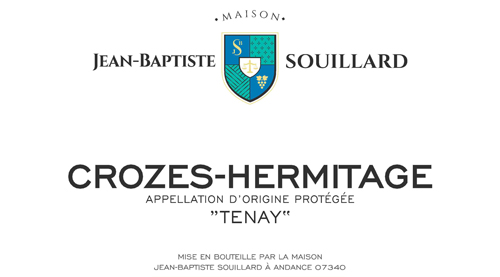Crozes-Hermitage Tenay
At a Glance
- Variety: Syrah
- Vine Age: Planted in the 2010s
- Terroir: On a very steep, southeast-facing slope, 200 m elevation, complex, rocky, calcareous soil with a mixture of gneiss, granite, alluvium, and loess.
- Viticulture: Sustainable, gobelet-pruned with wooden stakes
- Vinification: 40-100% whole-cluster, 2-3-week ambient yeast fermentation and maceration with pump-overs, aged for 13-18 months in used barrels, no fining or filtration, minimal SO2 added during vinification and adjusted after if needed.
Additional Info
Site: The Tenay vineyard is located 3 kilometers northwest of the village of Crozes-Hermitage. Tenay’s slope can be described as steep to very steep, with big cuts in the sediments along the side of the slope. The slope faces to the southeast. The vineyard is at just over 200 meters in elevation.
Geology: The geology of Tenay is a complex mixture of gneiss, granite, alluvium, and loess. The lower portion of the vineyard consists of very decomposed, yellow, biotite-rich granite bedrock overlain by a layer of alluvium. The alluvial material is derived from an ancient uplifted terrace of the Rhône. In the upper portion of the vineyard, a layer of fine-grained calcareous loess (approximately 1 meter thick) sits on top of the alluvium.
Soils: The soils are yellow-ish brown, sandy, and generally calcareous but are highly variable along the slope. The soils are very rocky with up to 40% gravels and cobbles. The cobbles are a mixture of alluvial and granitic/gneissic material. The soils of Tenay are deep (1.5-2 meters).
We are greatly indebted to Brenna Quigley for the geology and physical descriptions.
Wines
-
White
-
Rosé
-
Red
- Chatus
- Syrah
- Côte-Rôtie Côteaux de Bassenon
- Cornas Les Côtes
- Côte-Rôtie Tartaras
- Saint-Joseph
- Saint-Joseph Bergeron
- Saint-Joseph Château Morel
- Saint Joseph L'Echirol
- Saint-Joseph Janoune
- Crozes-Hermitage
- Crozes-Hermitage Les Baties
- Crozes-Hermitage Les Habrards
- Crozes-Hermitage Tenay
- Cornas Saint-Pierre

